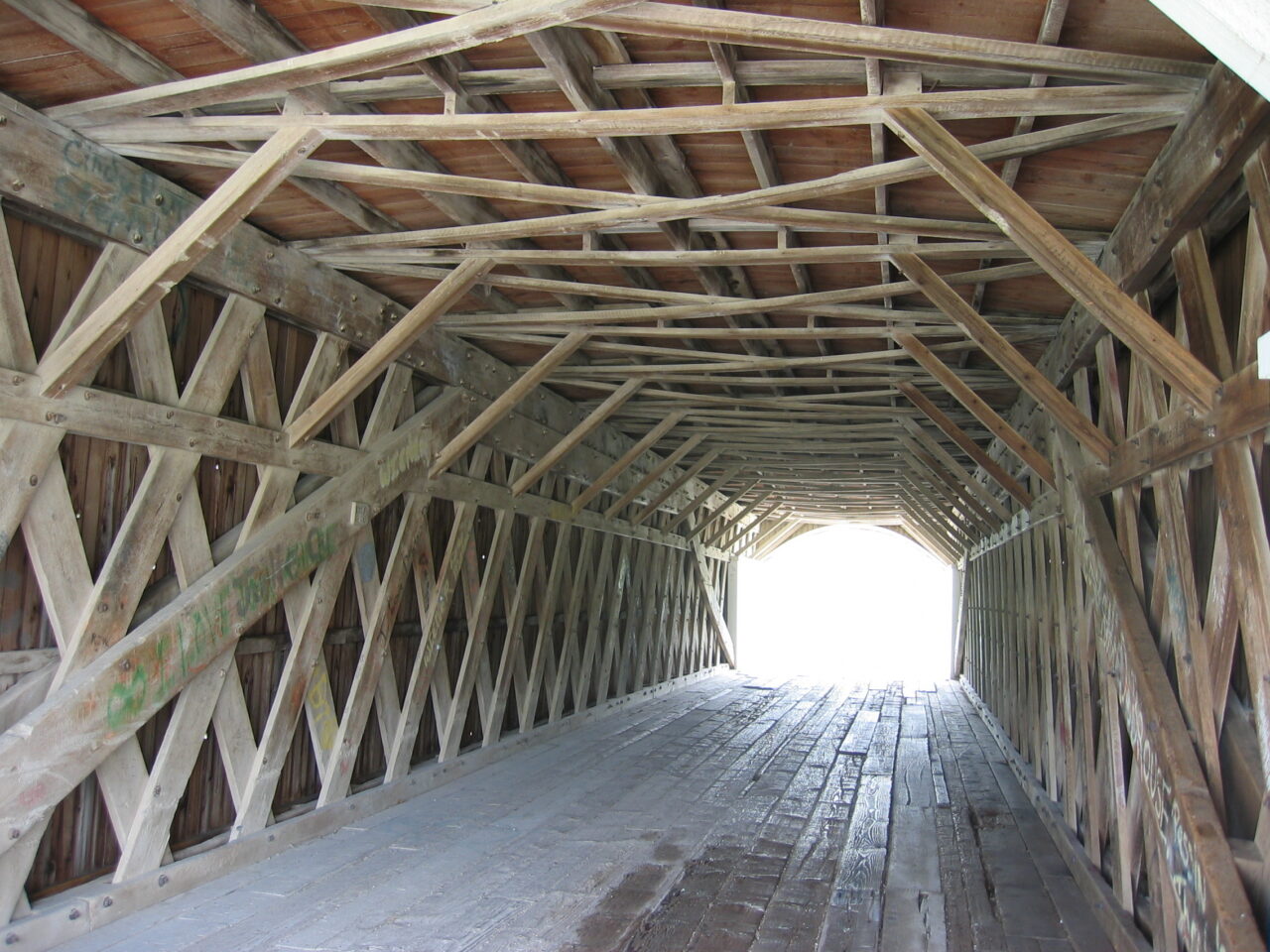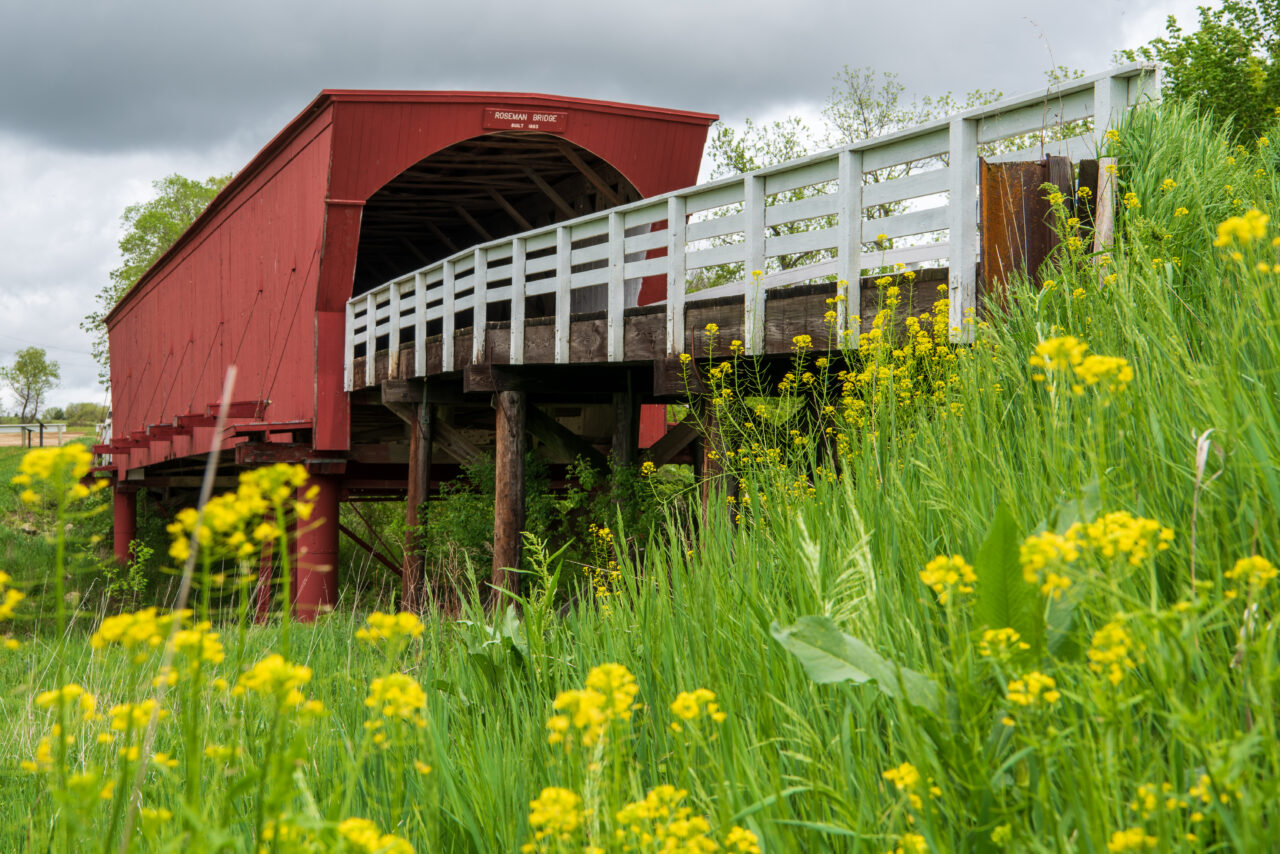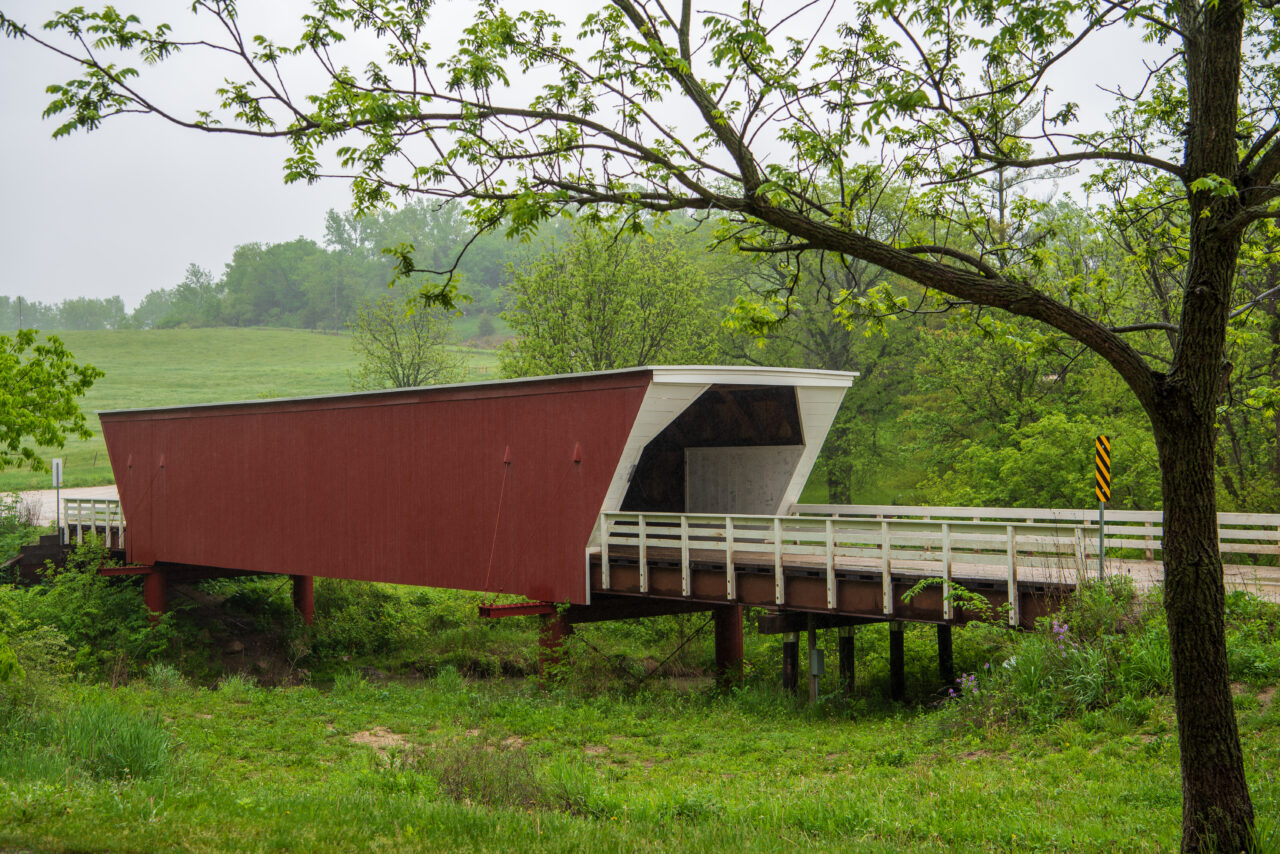Covered Bridges in the Midwest
With more than a dozen covered bridges in the area, the Heartland is a dream for covered bridge enthusiasts. A covered bridge is, by definition, any bridge with any amount of covering. When you think of a traditional covered bridge, you probably think of a wooden bridge traversing a body of water with a covering extending the entire bridge span. We will use that as a guide and take it a step further and focus on bridges over a century old.
Missouri is home to four of these bridges, whereas Kansas no longer has any standing. Our neighbor to the north, Iowa, boasts nine covered bridges, many of which have been featured in literature and films.
The Design
Covered bridges started being built in the early 1800s as the need to traverse streams and rivers heightened. A standard, uncovered, wooden bridge would only last approximately 20 years because of the elements. A covered bridge can be expected to last more than 100 years with proper maintenance. The design of a covered bridge is simple. Typically, the bridge is a combination of an arch for its load bearing capabilities and truss for rigidity. Patented in 1817, the Burr Arch Truss is the most common design for a covered bridge.
Looking at the historical bridges, you will notice something in common with many covered bridges – the color! Most bridges were painted “barn red.” It would be great to say this was for safety or longevity reasons. But it is simply a cost-cutting measure. Barns, bridges, and other wooden structures were typically painted red in the 1800s because it was cheap to make. All three ingredients were readily available: milk, rust, and lime.
 Covered Bridges in Missouri
Covered Bridges in Missouri
There are four wooden covered bridges still standing in the state of Missouri. Burfordville, Locust Creek, Union and Sandy Creek.
Burfordville Bridge spans 140’ across the Whitewater River in the Bollinger Mill State Historic Site. Being built pre-Civil War in 1858, it is the oldest of the four surviving bridges. Getting to the bridge can be a drive for some. It is located nearly two hours south of St. Louis, Missouri.
Built in 1868, during the post-Civil War reconstruction era, the Locust Creek Bridge is the second oldest of the four remaining bridges in Missouri. It is also the longest. It spans 151’ over the now dry Locust Creek. Located a mere 90 minutes from our Kansas City office, it can be accessed by a very short hike at the Locust Creek Covered Bridge State Historic Site.
The third longest and third oldest bridge in Missouri is the Union Bridge. Built in 1871, the 125’ long bridge traverses the Elk Fork Salt River in Monroe County, Missouri. A short 45-minute drive from Columbia, Missouri will get you to this beautiful bridge inside the Union Covered Bridge State Historic Site.
The Sandy Creek covered bridge is the shortest and youngest of the fourth surviving covered bridges of Missouri. Built in 1872, this 74’ bridge spans across Sandy Creek in Jefferson County, Missouri. To visit the barn red bridge, you would need to take a short 45-minute drive south of St. Louis, Missouri to the Sandy Creek Covered Bridge State Historic Site.
Covered Bridges in Iowa
Iowa has a storied past with covered bridges and even hosts an annual covered bridge festival. The film and novel, The Bridges of Madison County, takes place in Iowa and several bridges referenced still stand today!
Built mere months after the end of the Civil War in 1866, the Owens Covered Bridge in Allen, Iowa is the oldest standing bridge in the area. The bridge was built to cross the Yeader Creek, an offshoot of Lake Easter. If you are in the Des Moines, IA area, be sure to visit.
The next two bridges have a unique history. The Wilcox Game Preserve Bridge and the Marysville Bridge are the same bridge separated by nearly 14 miles of road! Originally built 1870, it spanned over 80’. In 1970, the bridge was cut in half with 40’ of the bridge heading to the Wilcox Game Preserve and 41’ heading to Knoxville, IA. Both bridges can be found within an hour’s drive southeast of Des Moines, IA.
Also built in 1870 is the Hammond Covered Bridge. Built to cross North Cedar Creek, it spans 80’. It too is just an hour’s drive southeast of Des Moines, IA for a quick afternoon trip.
The Bridges of Madison County

The Cutler-Donahue Bridge is a 79’ long bridge erected in 1871. It was originally built to transverse the North River in Bevington, IA. It was relocated about 13 miles west in 1979 to Winterset City, IA where it welcomes visitors as the entrance to the city park. You shouldn’t get lost finding it, but you might get lost while there. Be sure to check out the neighboring English Hedge Maze to test your maze skills. This bridge is part of the famed Madison County Covered Bridges.
The 81’ long Imes Bridge was built in 1870 to cross the Middle River. 17 years later, it was moved to Clinton Creek where it stood nearly 90 years. It then moved for the third time to its current home in the Imes Bridge Park in St. Charles, IA. This is the oldest covered bridge that is part of the famed Madison County Covered Bridges.
1880 gave us the Holliwell Covered Bridge that spans over 122’. This makes it the longest bridge in the Madison County Covered Bridges system. The bridge crosses the Middle River on the outskirts of Winterset, IA. Just a moderate 3-mile walk from the above-mentioned Cutler-Donahue Bridge.
The Roseman Bridge is probably one of the most recognized of all the bridges listed. It was built in 1883 to cross over the Middle River near Winterset, Iowa. It spans 106’ to make the crossing. The Roseman Bridge is one of the main bridges featured in the novel and feature film, The Bridges of Madison County. It, of course, is part of the Madison County Covered Bridges.
Many bridges have unique names but one of the most unique names is Hogback Bridge. It is part of the Madison Country Covered Bridges and is located near Winterset, IA. Many believe the name is based on the animal but, in fact, it is named after the ridge nearby. Built in 1884, it is the youngest, original bridge in Madison County. Spanning 106’, it was used to cross the North River.

Although the above nine bridges meet the guidelines of being over a century old, there is one bridge we would be remised if we did not discuss – The Cedar Covered Bridge.
The Cedar Covered Bridge is the most recognizable covered bridge in the region thanks to the novel and feature film, Bridges of Madison County. It is the feature bridge of the Madison County Covered Bridge system. This 78’ long bridge was featured on the cover of the novel and filming took place on this historic site. The bridge, originally built in 1883 just outside of Winterset, IA was used to cross Cedar Creek. It was moved to another location on the creek in 1921 where it has been ever since. However, in 2002, the bridge was destroyed by arson.
After the arson attack of 2002, the bridge was removed from the National Register of Historic Places. It was rebuilt a few years later using the same plans, techniques, and authentic materials. However, it was considered a new bridge and not qualified to be an historic site. 13-years later, the replacement bridge was victim is arson once again. 2019 had a third bridge open to the public to celebrate this storied covered bridge.
Next time you are interested in a civil-engineering themed road trip around the Midwest, be sure to add these beautiful pieces of history to your itinerary.
Kaw Valley Engineering, established in 1982, is known as a team of experts who guide projects from inception to completion. With a comprehensive range of services in civil engineering, geotechnical engineering, surveying, construction observation, and materials testing, they cater to clients throughout the Midwest. Kaw Valley Engineering has offices in Junction City, Lenexa, Salina, Emporia, Wichita and Garden City, Kansas, as well as Kansas City, Missouri, strategically positioning themselves to serve their clients effectively.
